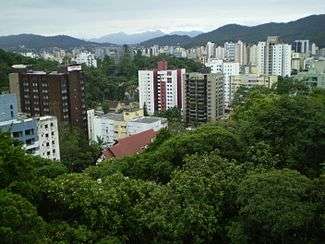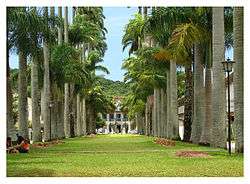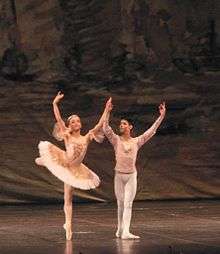Joinville
Joinville is the largest city in Santa Catarina, Brazil. It is principally an industrial city and many of its 500,000 inhabitants are of German descent.

Understand
Joinville, in its first year known as Colônia Dona Francisca, was founded in 1851 by German, Swiss and Norwegian immigrants. Even though it is considered a German-Brazilian city, its name is French (Joinville was named after François d'Orléans, prince of Joinville, son of King Louis-Philippe of France, who married Princess Francisca of Brazil, in 1843).
The land where Joinville is located was part of the French and Brazilian Royal Family wedding gift, even though the Prince of Joinville and his Brazilian bride had never been to the land. However, a Royal Palace was built in their honor around 1870. In 1851, the French prince, after a financial crisis, sold almost all his lands in Southern Brazil to the German Senator Mathias Schröder. Senator Schröder was a member of the Colonization Society of Hamburg, which attracted immigrants to be sent to Brazil and thereby establish commercial ties between Germany and the German communities in Brazil. In 1851, the first 118 German and Swiss immigrants arrived, followed by 74 Norwegian immigrants. From 1850 to 1888, Joinville received 17,000 German immigrants, most of them Lutherans, poor peasants coming to occupy this part of Brazil. Later waves of immigration brought large numbers of Italian families to the area as well.
Get in
By plane
Numerous cities around Brazil have flights to and from Joinville Airport, with the most regular (multiple daily flights) being São Paulo (Congonhas Airport) and Rio de Janeiro (Guarulhos Airport).
Getting from Joinville airport to the city center, visitors have two options:
- Taxi (recommended): The drive takes on average about 25 minutes and the fare was R$33-35 in 2011
- Public Transportation (recommended for locals only): There are no direct buses from the airport to the city center or the bus terminal (rodoviária). It is necessary to take a bus to Iririú and change there to a bus towards center.
By bus
Alternatively, it is possible to get to Joinville from almost any town or city in Santa Catarina by bus (Catarinense, the state's largest bus company, offers the greatest range). Outside Santa Catarina, several places offer bus services to Joinville, including Curitiba, São Paulo, Porto Alegre and Iguaçu Falls (via Curitiba).
By car
BR-101 is the main highway through town, connecting from Balneário Camboriú and Florianópolis in the south and Curitiba, in Paraná to the north. If coming from the west via Canoinhas or Papanduva, you'll like arrive via BR-280, which intersects with BR-101 a few kilometers south of town, or SC-301, which hits BR-101 at the north end of town. The main entrance to town is considered to be the exit at Rua XV de Novembro, which leads east to the downtown district.
Get around
It is easiest to get around Centro (downtown) by foot, as everything is close together. Should you wish to venture out into the suburbs, Joinville has a reliable bus network which is used heavily by locals. Tickets can be purchased from any one of the numerous bus terminals around the city, or on the buses themselves. Be warned, however: both buses painted completely blue and those with a blue stripe on each side are direct buses, they generally go from one bus station to another without stopping.
See

- Bolshoi Ballet School (Escola de Teatro Bolshoi), Avenida Beira Rio, 315, ☎ +55 47 3422-4070. F 10AM-4PM. Well worth a visit if you're in the area. This is the only school run by the famous Bolshoi Ballet Company outside of Russia. Guided tours are in Portuguese (though if you're lucky the guide may be fluent enough in English to give you a run down), and should be booked in advance. R$3.
- Caiera Park (Parque da Caiera) (south zone). A part of the Atlantic Forest with walking trails and a lookout with views on Babitonga Bay.
- Finder Hill Ecological Park (Parque Ecológico Morro do Finder), Bom Retiro. Has various trails for walking or mountain biking, and a lookout point from which you can see the Aventureiro neighborhood.
- Estação da Memória, Anita Garibaldi (next to Shopping Joinville). What was the local train station from 1906 to 1996 has now been restored and reconfigured to hold a railway museum, a sporting center, skate park, a playground, and other attractions.
- Bicycle Museum (Museu da Bicicleta). Holds 15,000 bicycles, the oldest of which is an Italian "Volcite" from 1906. It is closed.
- Expoville (at the main entrance to the city). A leisure center with an exposition center, a small park, a shopping area, a lake with pedalboats, and a model car racetrack.
- National Museum of Immigration and Colonization (Museu Nacional de Imigração e Colonização), Rua Rio Branco, 229 (in front of Rua das Palmeiras), ☎ +55 47 3433-3776. Tu-Su 9AM-noon and 2PM-6PM. This museum offers a glimpse of life as it was for Joinville's first European settlers . It includes a historic house set up as it would have been around 150 years ago, as well as well as a couple of sheds containing machinery which was used in past times.
- Rio Bonito Highway (Estrada do Rio Bonito) (from km 22 of BR-101). A beautiful road with natural elements and German architecture and other German touches. Streets to either side lead to restaurants, residences, and fishing holes, and at the end of the road there is a typical German restaurant which offers dishes such as stuffed duck, and the Bonito River, good for a swim. There are also some trailheads from here.
- Rua das Palmeiras, Rua Alameda Brustlein. A well known pedestrian-only street lined with palm trees which were brought from Rio de Janeiro in 1873. It is the quintessential postcard shot of the city.
- Sambaqui Archeological Museum, Av. Beira-Rio - Centro. Displays some fossils found in the region and tells of the northeast Santa Catarina's sambaquis, pre-historic shell-mounds created by an unknown people who lived along the coast between 6000BC and 0BC.
- Scenic Lookout (Mirante), Rua Saguaçu - Saguaçu (on top of Morro da Boa Vista, the rainforest-covered hill next to Centro). This 250-m tower is one of the city's main attractions. It offers an impressive panoramic view of the city and of Babitonga Bay.
- Timber-Frame House (Casa em Enxaimel), Rua Araranguá - Centro. A typical German immigrant house which shows how the Germans lived during the colonial period.
- Vigorelli Beach (Praia do Vigorelli), João de Souza Mello e Alvim Highway - Vila Cubatão. Joinville's only beach borders Babitonga Bay. It doesn't have a lot of sand, but is a safe place to swim, and there are a number of bars and restaurants along it.
- Zoo and Botanical Gardens (Parque Zoobotânico), Rua Pastor Guilherme Rau - Saguaçu (at the base of the lookout on Morro da Boa Vista), ☎ +55 47 3431-5016. Tu-Su 9AM-6PM. Joinville's zoo houses a modest collection of Brazilian animals and local flora. Free.
Do

Events
- Solidarity Fest (Festa da Solidariedade). June.
- Joinville Dance Festival (Festival de Dança de Joinville), ☎ +55 47 3423-1010. 10 days in late July. Considered the biggest dance festival in the world, thousands of dancers from all over Brazil and beyond flock to the city, making it possibly the best time to visit the city. For the duration of the event, various public spaces throughout Centro become the setting of all kinds of dance performances, from hip hop to ballet. The festival cumulates with 'Champions Night', where the winners of all the categories perform in the Bolshoi Ballet Theater. It is sure to be a memorable night. Tickets sell fast. Some event free, others R$12 to R$110 per event, depending on the event and the seat.
- Flower Fest (Festa das Flores). November.
- Tradition Fest (Festa das Tradicões). October.
Buy
- Public Municipal Market Germano Kurt Freisler (Mercado Público Municipal German Kurt Freisler), Pc Hercílio Luz, 1 - Centro, ☎ +55 47 3422-8922.
- Shopping Cidade das Flores, Rua Mário Lobo, 106- Centro, ☎ +55 47 3433-0758. M-Sa 10AM-10PM, Su 2PM-8PM.
- Shopping Mueller, Rua Sen. Felipe Schimidt - Centro (corner with Rua Pedro Lobo), ☎ +55 47 3903-3000. M-Sa 10AM-10PM, Su 2PM-8PM. Some of the best shopping in the city, including many fashion outlets and other stores.
Eat
In addition to the standard array of Brazilian, Italian, and Middle Eastern food that can be found pretty much anywhere in Brazil, Joinville is an excellent place to enjoy traditional German and Swiss cuisine, and restaurants of this type can be found throughout the city. Also look to pick up some streuselkuchen or apple strudel at one of the many confectioneries, and keep an eye out for locally produced chocolate such as Joinvilândia. If you're having trouble deciding what to eat, take a stroll down Rua Visconde de Taunay, the city's biggest concentration of restaurants and bars.
Budget
Mid-range
- Recanto do Marreco, Rua 15 de Novembro, 3791 - Glória, ☎ +55 47 3453-0975.
Splurge
- Biergarten, Rua Visconde de Taunay, 1183, ☎ +55 47 3423-3790. One of the more famous German restaurants in town, revered for its typical German dishes and cold draft beer. You may even bump into celebrities eating here. Around R$70/person.
Drink
- Biero Restarante e Boate, Rua Ministro Clógeras, 791, ☎ +55 47 3422-3016.
- Dreams, Rua Blumenau, 1321, ☎ +55 47 3026-2143.
Sleep
Budget
- Avenida Palace Hotel, Av. Getúlio Vargas, 75, ☎ +55 47 3433-8070.
- Hotel Mattes, Rua XV de Novembro, 801, ☎ +55 47 3422-3582.
- Hotel Príncipe, Rua Jerônimo Coelho, 27, ☎ +55 47 3028-4555.
- Joinville Hostel, Rua Dona Francisca, 1376, ☎ +55 47 3424-0844. Saguaçú.
Mid-range
- Joinville Palace Hotel, Rua do Príncipe, 142, ☎ +55 47 3433-6111.
- Sleep Inn Joinville, Rua Senador Felipe Schmidt, 460, ☎ +55 47 2105-3700.
Splurge
- Mercure Hotel Prinz, Rua Otto Boehm, 525, ☎ +55 47 3481-9111.
- Slaviero Suites, Av. Dr. Albano Schulz, 815, ☎ +55 47 2101-8500.
Connect
- Clans BR, Rua 9 de março, 836 (upper floor), ☎ +55 47 3422-5648.
- Clube da Rede, Rua Tuiuti, 1447, ☎ +55 47 3467-1257.
- Lan House Mania Virtual, Rua Fernando Nunes Santana, 887, ☎ +55 47 3454-7598.
Go next
- Beaches - For the residents themselves, by far the most common trip is to the beach. Barra Velha, Piçarras and Balneário Camboriú are amongst the most popular coastal towns within an hour's drive. All are reachable by bus.
- Blumenau
- São Francisco do Sul - It could be worth making the trip to this a fishing community on an island across from Joinville; it is around a 30-minute drive by car, or can be reached by ferry from Vigorelli Beach (See section above). São Francisco do Sul was one of the very first places in Brazil to be colonized by Europeans and the old area is full of brightly coloured Portuguese buildings.
- Scenic drives between Joinville and Curitiba (off the BR-101 highway) which include lush countryside with ponds, fields, etc.
| Routes through Joinville |
| Balneário Camboriú ← Barra Velha ← | S |
→ Garuva → becomes BR-376 → Curitiba |